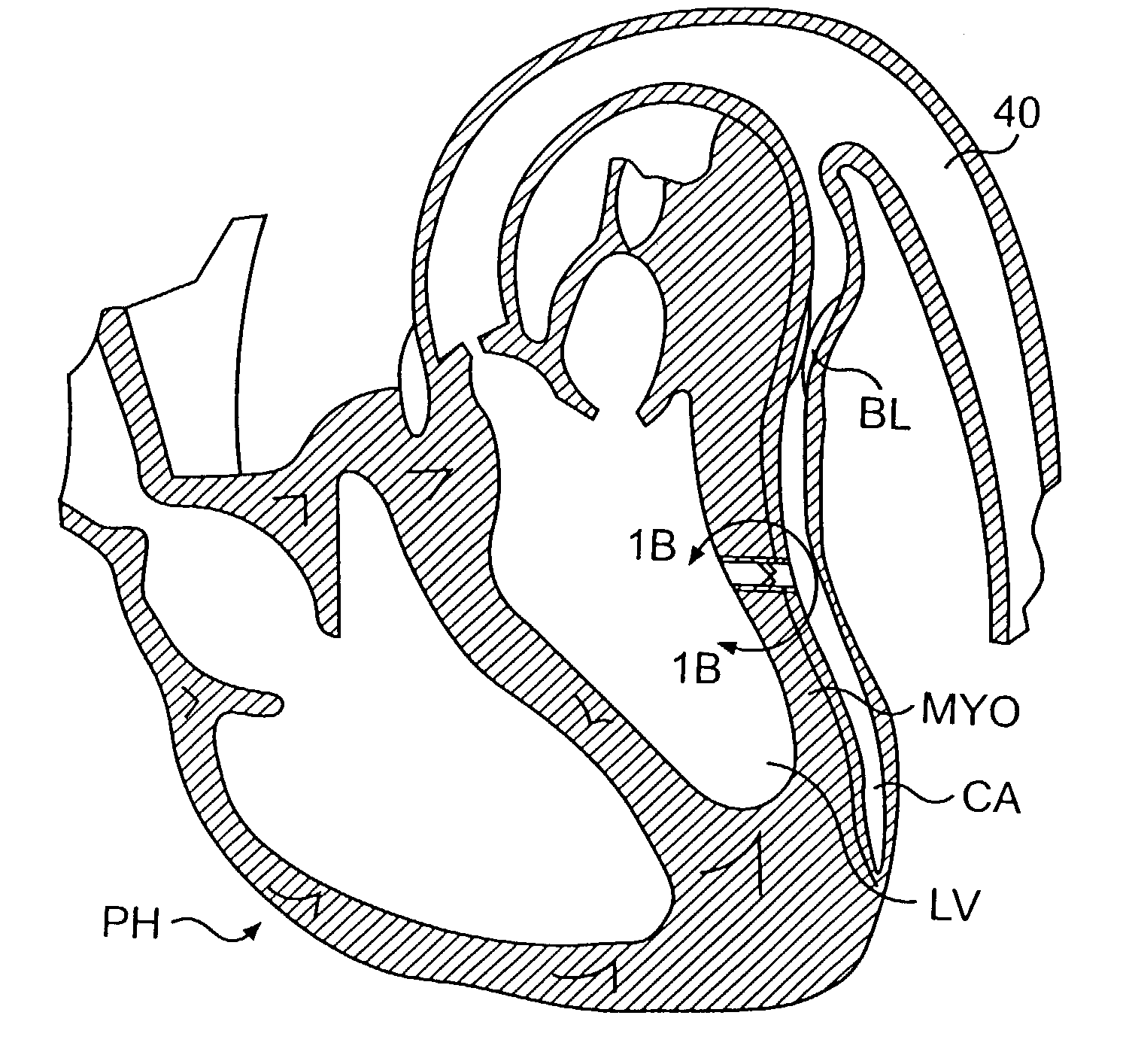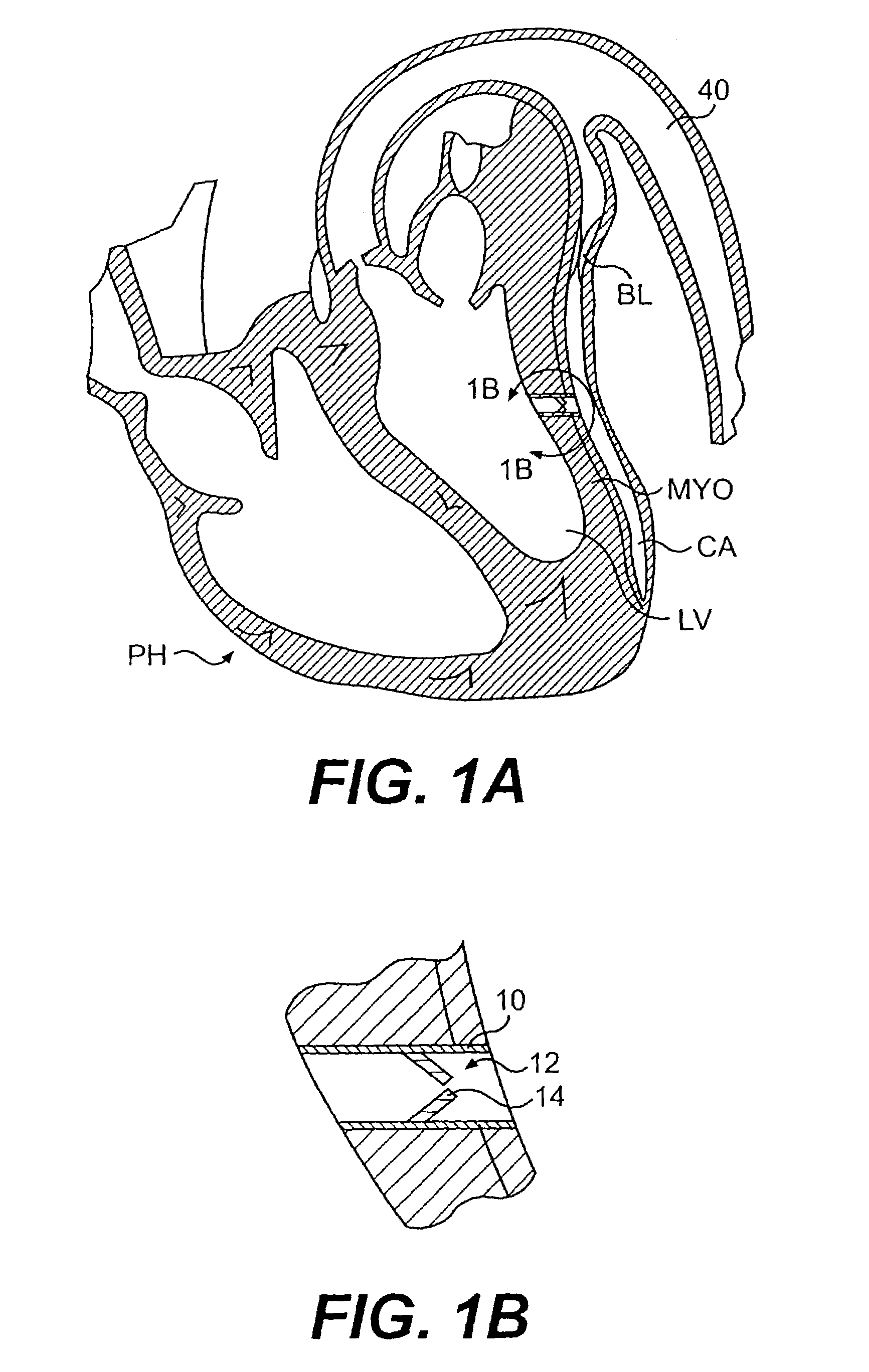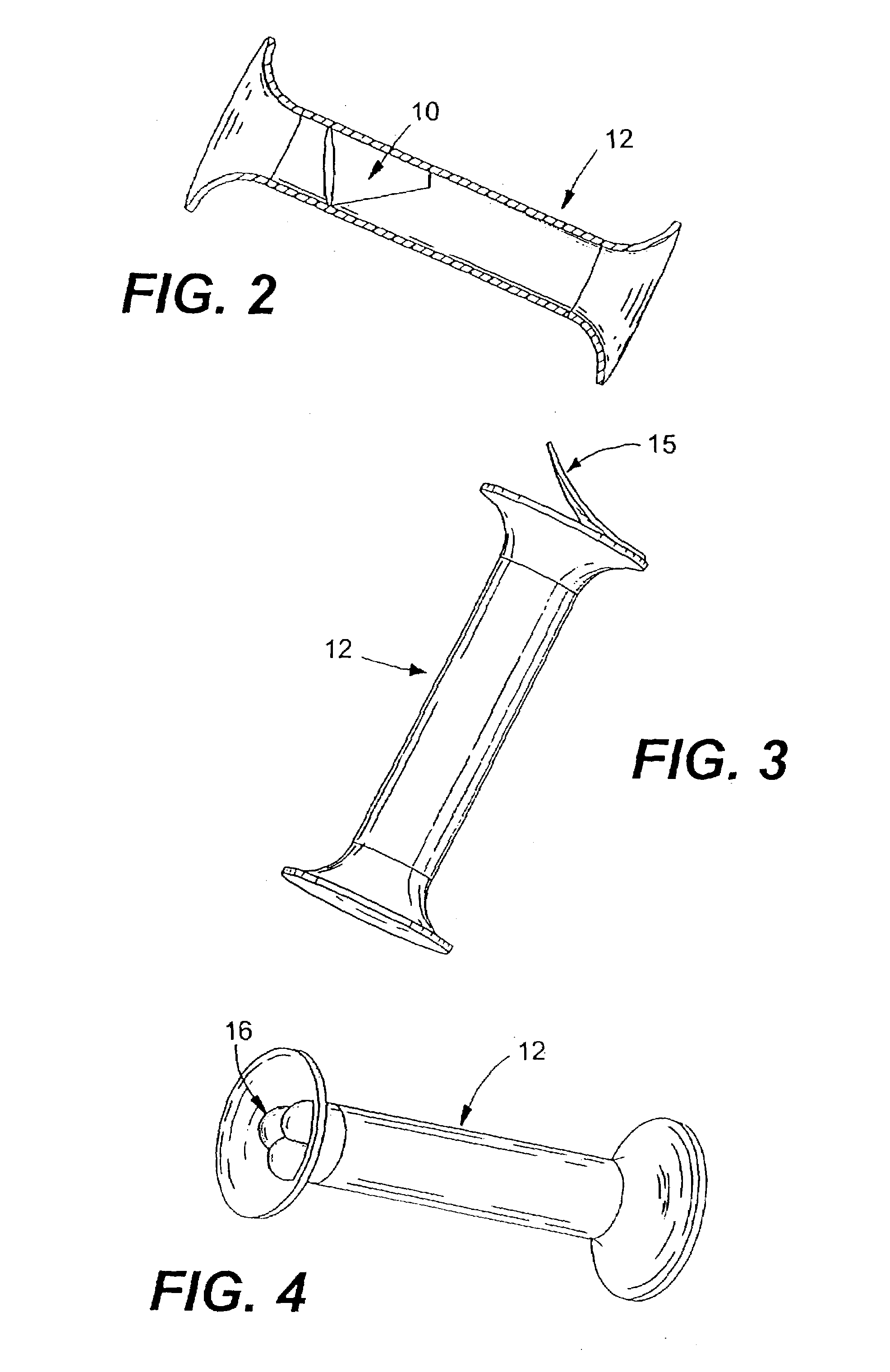Valve designs for left ventricular conduits
- Summary
- Abstract
- Description
- Claims
- Application Information
AI Technical Summary
Benefits of technology
Problems solved by technology
Method used
Image
Examples
Embodiment Construction
[0027]As is well known, the coronary artery branches off the aorta and is positioned along the external surface of the heart wall. Oxygenated blood that has returned from the lungs to the heart then flows from the heart to the aorta. Some blood in the aorta flows into the coronary arteries, and the remainder of blood in the aorta flows on to the remainder of the body. The coronary arteries are the primary blood supply to the heart muscle and are thus critical to life. In some individuals, atherosclerotic plaque, aggregated platelets, and / or thrombi build up within the coronary artery, blocking the free flow of blood and causing complications ranging from mild angina to heart attack and death. The presence of coronary vasospasm, also known as “variant angina” or “Prinzmetal's angina,” compounds this problem in many patients.
[0028]As used herein, the term “heart chamber” primarily refers to the interior, or lumenal, aspect of the left or right ventricle or the left or right atrium. Th...
PUM
 Login to View More
Login to View More Abstract
Description
Claims
Application Information
 Login to View More
Login to View More - R&D
- Intellectual Property
- Life Sciences
- Materials
- Tech Scout
- Unparalleled Data Quality
- Higher Quality Content
- 60% Fewer Hallucinations
Browse by: Latest US Patents, China's latest patents, Technical Efficacy Thesaurus, Application Domain, Technology Topic, Popular Technical Reports.
© 2025 PatSnap. All rights reserved.Legal|Privacy policy|Modern Slavery Act Transparency Statement|Sitemap|About US| Contact US: help@patsnap.com



